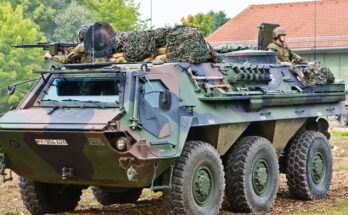by Dan Darling, International Military Markets Analyst, Forecast International.
In an about-face, Poland will scrap its planned $3 billion procurement of 50 helicopters from Airbus, according to a report published in local daily Rzeczpospolita on February 4.
The decision came quickly.
Shortly after Poland’s conservative Law and Justice (PiS)-led government rode into office last October, its leadership began publicly questioning the decision made by the previous centrist Civic Platform (CO) administration to procure the Airbus Helicopters H225M Caracal to meet the Polish armed forces’ military utility helicopter requirement. That announcement had come as a shock to many observers, who expected Poland to opt for the Sikorsky S-70i Black Hawk to fill the (original) requirement for new-build medium-lift utility helicopters.
Under Poland’s broad “Technical Modernization Program 2013-2022” military modernization program, the Defense Ministry has made phasing out the armed forces’ Soviet-legacy helicopter fleet a priority. The main pillars of this effort include the aforementioned new-build medium-lift utility helicopter requirement (originally calling for 70 units under the PLN11.5 billion earmarked for the project) and the purchase of 32 new attack helicopters.
The larger of the two projects, the utility requirement, came down to three platforms: the Airbus Helicopters H225M Caracal, the Sikorsky S-70i, and the AgustaWestland AW149.
The favorite was considered to be the Sikorsky offering due to the company’s deep and long-standing ties with Polish industry. Sikorsky was the first company to invest in Poland’s aerospace sector when it purchased PZL Mielec (Polish Aviation Works-Mielec) in March 2007. AgustaWestland, meanwhile, also had sunk roots into Poland, purchasing PZL-Swidnik in August 2009.
Airbus Helicopters, on the other hand, has no firm hand in Polish industry, although it has an existing distribution and maintenance partnership with Heli Invest on the civil side of its aviation interests.
Yet in the end it was Airbus Helicopters that won the Polish bid. When it announced its selection on April 21, 2015, Poland’s Ministry of National Defense cited the inability of the Sikorsky and AgustaWestland bids to meet the formal and technical requirements of the tender. Regarding the S-70i Black Hawk, the Polish MoND mentioned the helicopter’s mission system and Sikorsky’s longer delivery schedule as reasons why the platform was bypassed in favor of the H225M.
At the time of the selection, it was announced that the first units would be manufactured from Airbus Helicopters’ main production line in Marignane, France. In the meantime, Airbus and Heli Invest would build a final assembly line in Lodz for production of all remaining units.
But almost immediately upon the announcement, there was pushback over the decision to select the Airbus Helicopters option.
Citing the high cost of the acquisition and the lack of offsetting local industrial involvement coming from the French side (one PiS official was quoted last November as saying only 10 percent of the purchased helicopters would be completed in Poland), the new government stepped into office seemingly eager to scrap the arrangement.
Although a contract had already been negotiated with Airbus by the economy ministry, no signature was laid down on paper. Thus the PiS can move on to a fresh deal with one of the two vendors already tied into Polish industry – Sikorsky and AgustaWestland. The best Airbus Helicopters could then hope to get out of the entire episode is a small batch order of helicopters, according to the Rzeczpospolita report.
Ultimately, the prior administration – admittedly more Europe-friendly than the new euro-skeptic and nationalistic PiS government – was more pragmatic in how it should approach deals with Poland’s European Union partners. While the H225M selection was made based on a host of factors, tying Polish industry into a reshaping of the European defense sector was also a consideration. The CO government understood that in order to carry a stronger voice in shaping European policy, it also had to be integrated within European defense at both the military and industrial levels.
The PiS government equally wants to pursue a course that is in Poland’s best interest, but in the instance of this project it diverges from its predecessor’s broader, long-term view in favor of immediate benefits to local industry.
For 50 years, Forecast International intelligence reports have been the aerospace and defense industry standard for accurate research, analysis, and projections. Our experienced analysts compile, evaluate, and present accurate data for decision makers. FI's market research reports offer concise analysis of individual programs and identify market opportunities. Each report includes a program overview, detailed statistics, recent developments and a competitive analysis, culminating in production forecasts spanning 10 or 15 years. Let our market intelligence reports be a key part of reducing uncertainties and mastering your specific market and its growth potential. Find out more at www.forecastinternational.com




